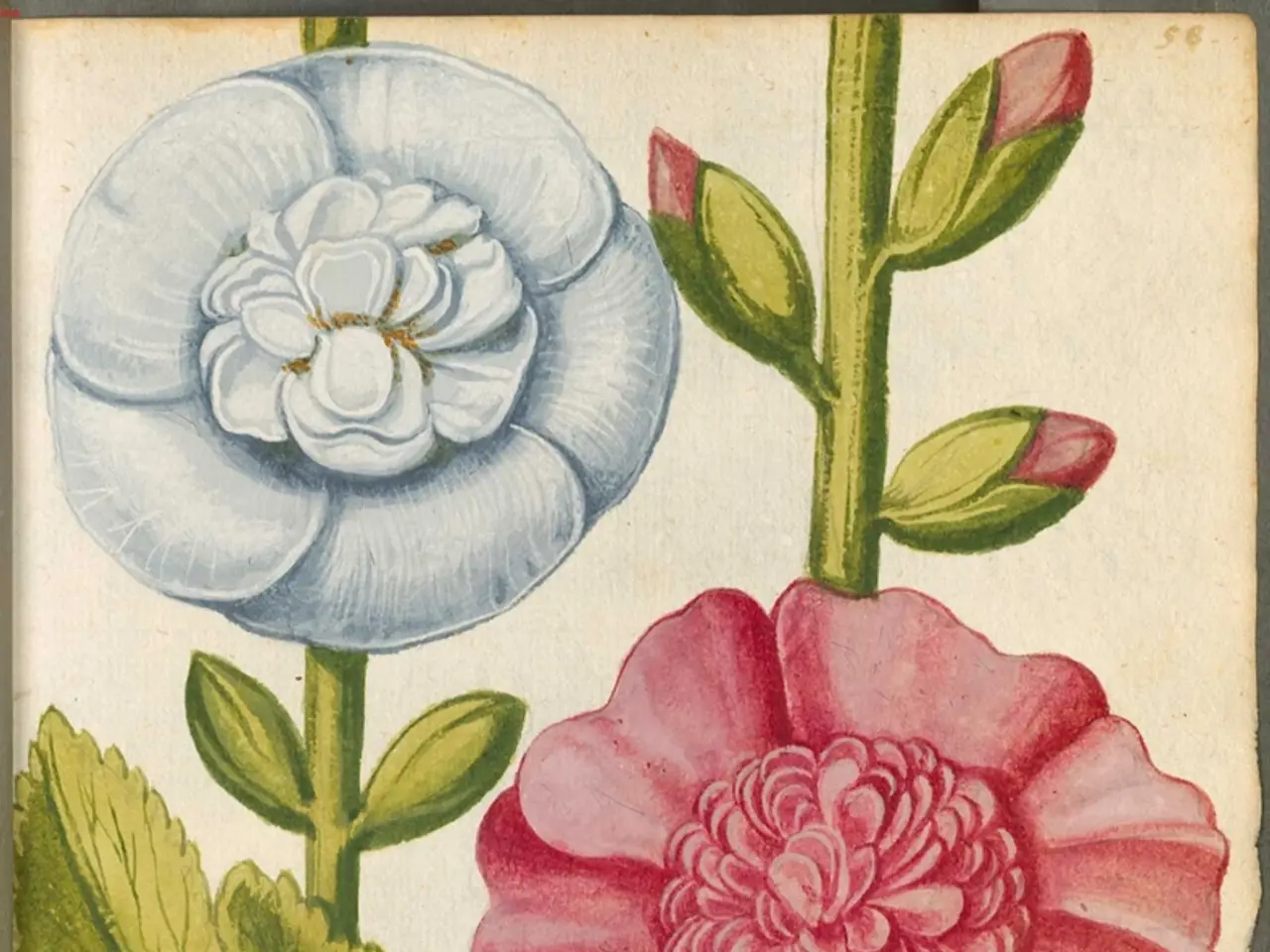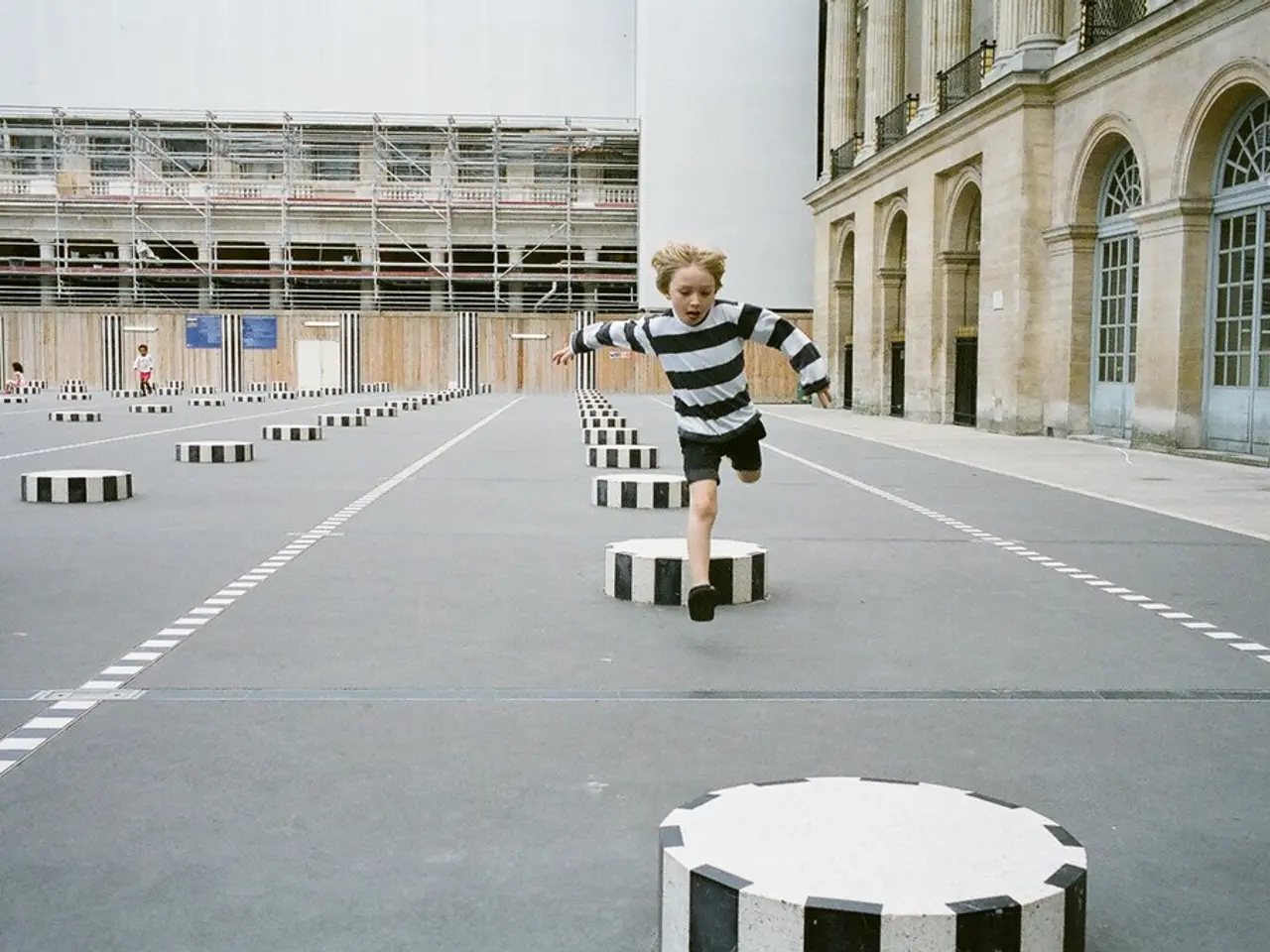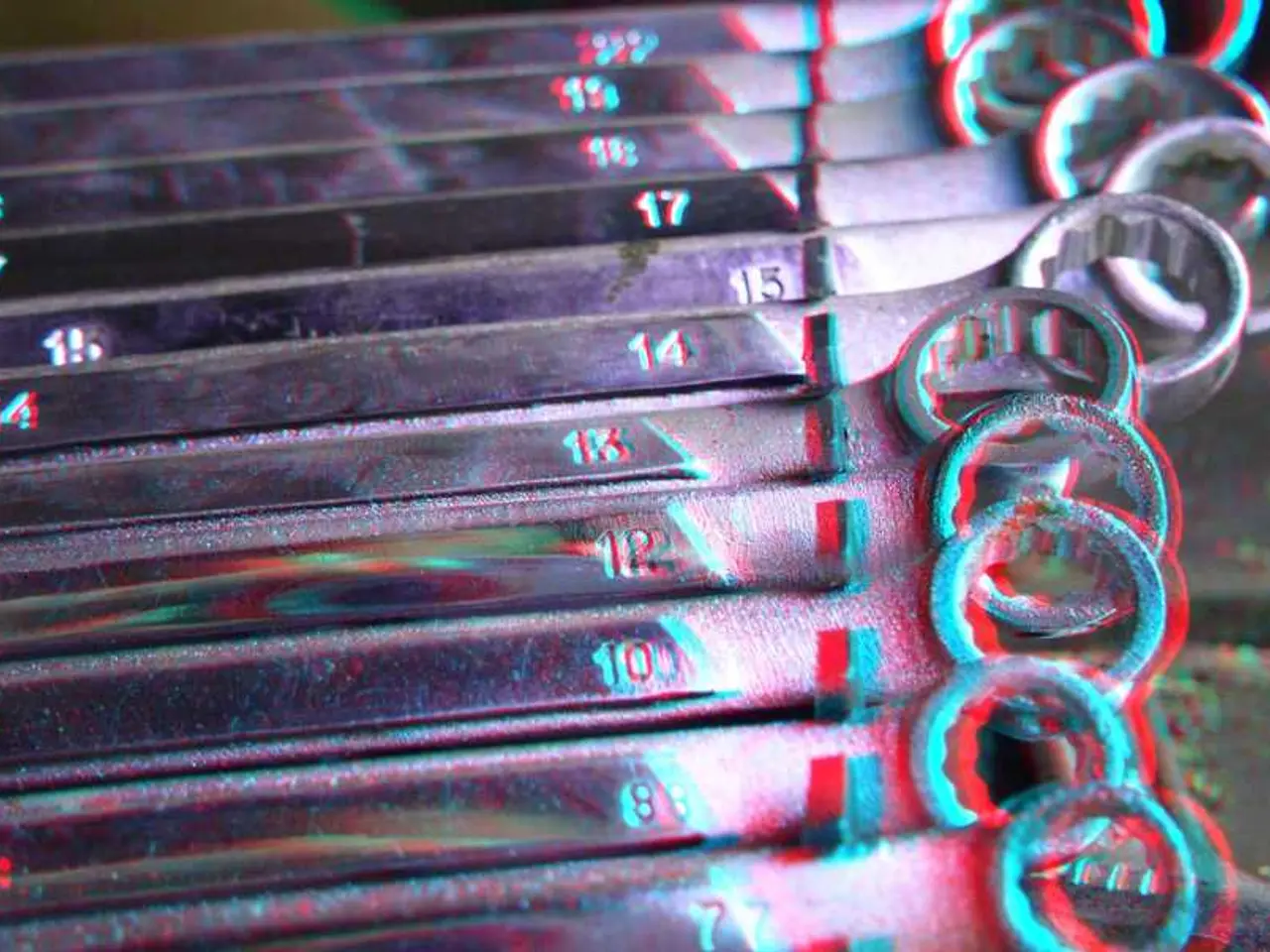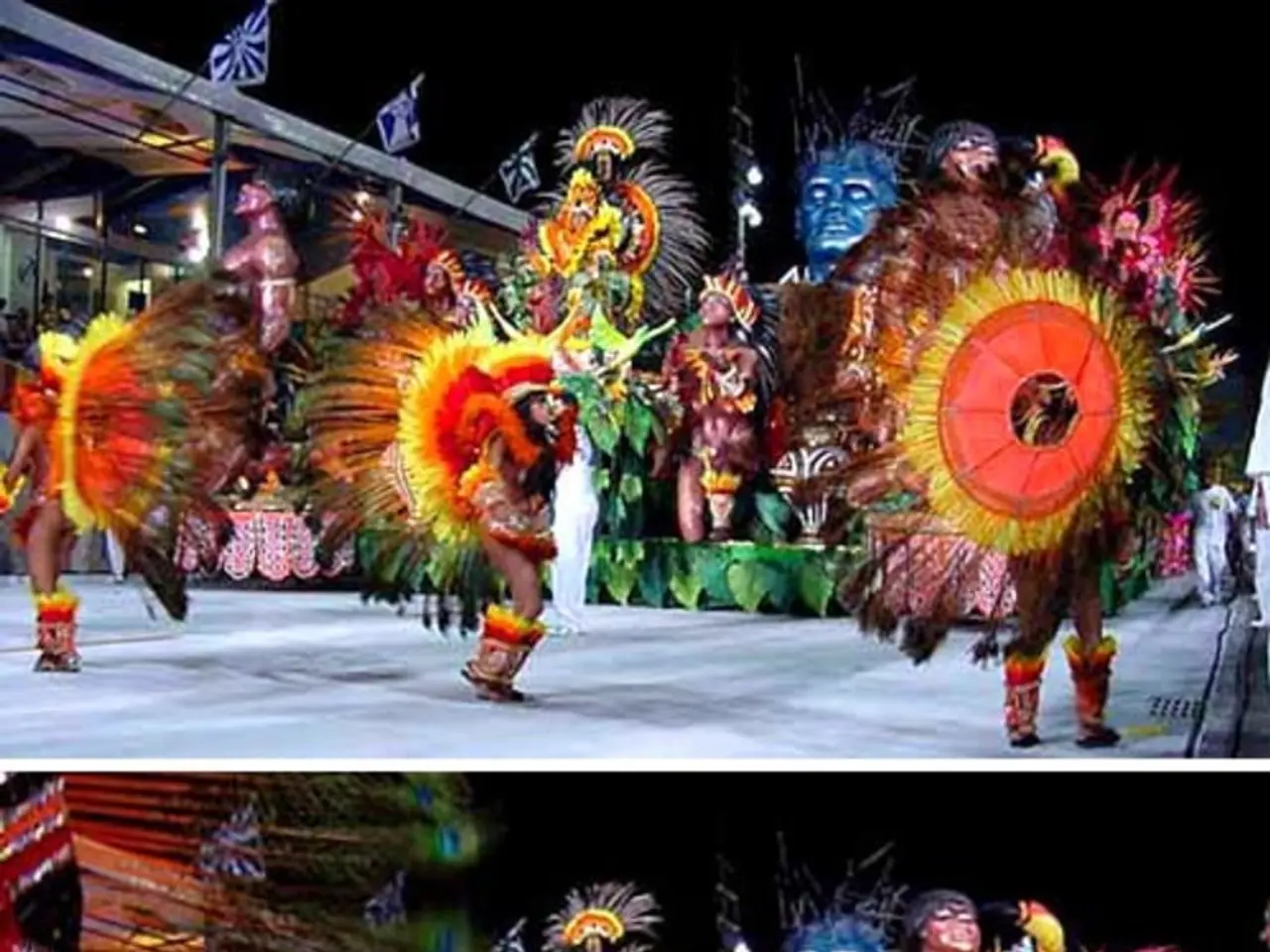Explanation of Poetic Mechanics
In the captivating world of poetry, visual effects play a significant role in enhancing the reader's experience. These effects, ranging from concrete poetry to figurative language, serve to create a more immersive and memorable experience, connecting readers intellectually and sensorially to the poem's meaning.
Illustrations can either enhance the meaning of a poem or serve as ornamentation. Visual imagery can be created through descriptive language, the poem's physical shape, placement on the page, or added illustrations. One striking example of visual effects is concrete poetry, where the physical layout of words forms a shape related to the poem’s subject. George Herbert's "Easter Wings" and "The Altar" are prime examples, shaped like wings and an altar respectively [1][3].
Other visual effects are created through figurative language that evokes vivid imagery, such as metaphors, similes, and personification. These devices create mental pictures by associating abstract ideas with tangible images. For instance, Emily Dickinson's metaphor of hope as a bird with feathers perching in the soul [1][2] is a powerful example of this technique. Using sensory-rich language engages the reader's senses, painting vivid mental scenes.
Typographic choices also contribute to visual imagery. Alliteration emphasising sound and rhythm, or carefully placed line breaks and spacing that create pauses or highlight words visually, all play a part in this [1][2].
These visual devices contribute to visual imagery by aligning form and content, making abstract concepts tangible and relatable, engaging multiple senses through sensory descriptions, and guiding reader attention and emotional response through visual arrangement and sound patterns [1][2][3].
Some poems, such as those by Shel Silverstein, may be vague or difficult to understand without looking at the accompanying illustration. Acrostics, poems with hidden messages where the first letters of each line might together spell out a word or a phrase, are another visual technique used by poets. Writing a poem can be similar to writing a story in terms of deciding on its content.
Notable examples of this include Lewis Carroll's "Alice's Adventures in Wonderland," which features a shape poem where the words are arranged to form a mouse's tail. Shel Silverstein often included illustrations with his poems, enhancing their visual appeal. Fancy lettering, like calligraphy, can also be used to enhance a poem's visual appeal.
However, more complicated acrostics might make the hidden message difficult to find by putting the essential letters elsewhere. Word placement, line placement, and line breaks can also affect visual imagery or the meaning of a poem. In concrete poetry, the words are arranged to form an image when viewed as a whole.
In conclusion, visual effects in poetry function to create a more immersive, memorable experience by connecting the reader both intellectually and sensorially to the poem’s meaning. They serve to make the abstract concrete, engage the senses, and guide the reader's emotional response, making poetry a truly multi-sensory experience.
[1] Poetry Foundation. (n.d.). Visual Poetry. Retrieved March 10, 2023, from https://www.poetryfoundation.org/articles/70854/visual-poetry [2] Poets.org. (n.d.). Visual Poetry. Retrieved March 10, 2023, from https://www.poets.org/poetsorg/poetry/poetry-terms/definitions/visual-poetry [3] University of Reading. (n.d.). Concrete Poetry. Retrieved March 10, 2023, from https://www.reading.ac.uk/web/files/concrete-poetry.pdf
- The world of fashion-and-beauty can be enhanced with sensory-rich descriptions, much like visual effects in poetry, creating a more immersive and memorable experience for viewers.
- Incorporating illustrations and figurative language into a home-and-garden design can evoke vivid mental imagery, fostering a connection between the designer and the space's users, intellectually and sensorially.
- A well-crafted recipe, replete with taste and visual descriptions, serves as a form of food-and-drink literature, inviting the reader to engage multiple senses and create a personal connection with the dish.
- Educational content can be more impactful when it employs visual imagery through vivid descriptions, diagrams, and illustrations, making abstract concepts tangible and relatable, akin to the effects produced in poetry.




